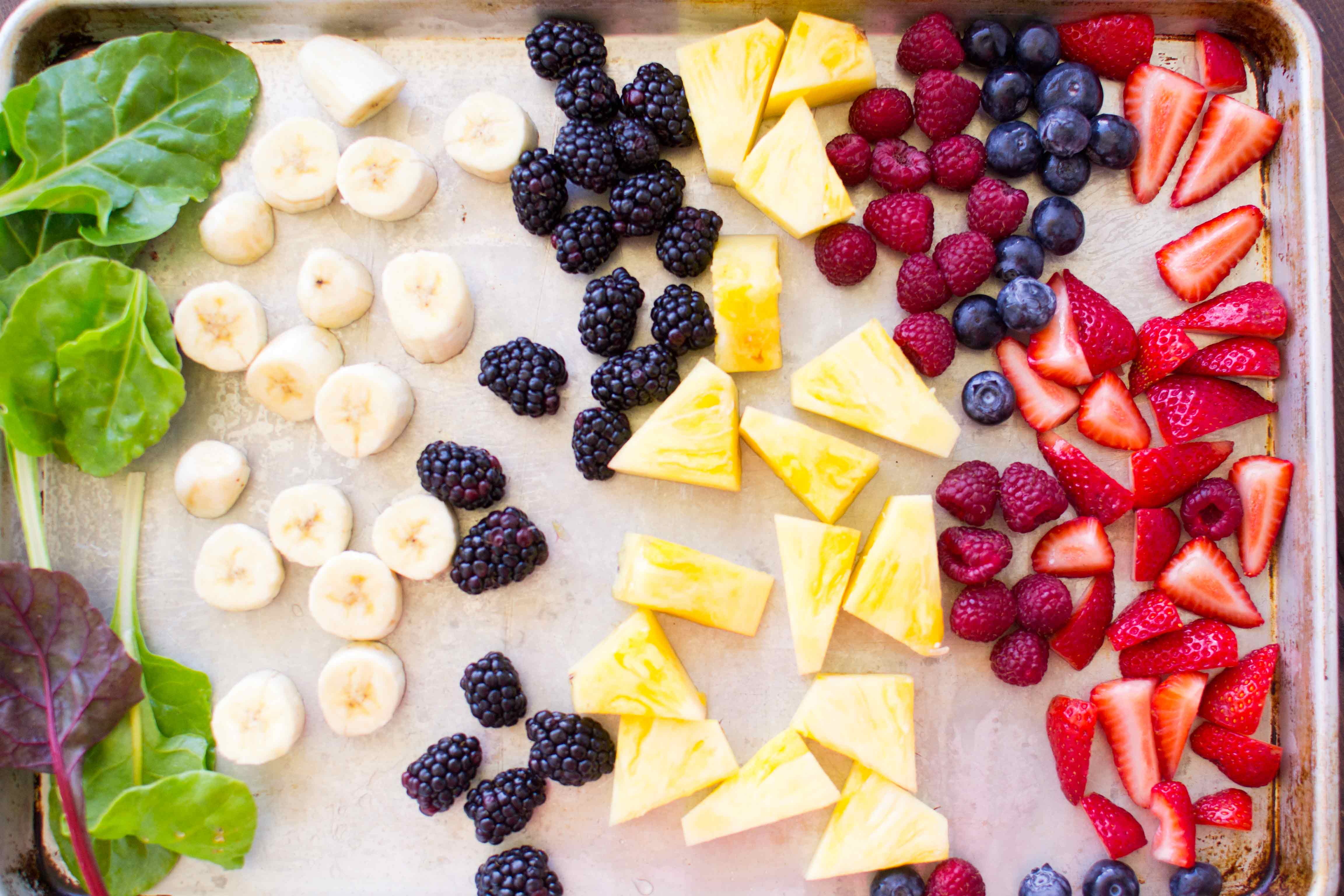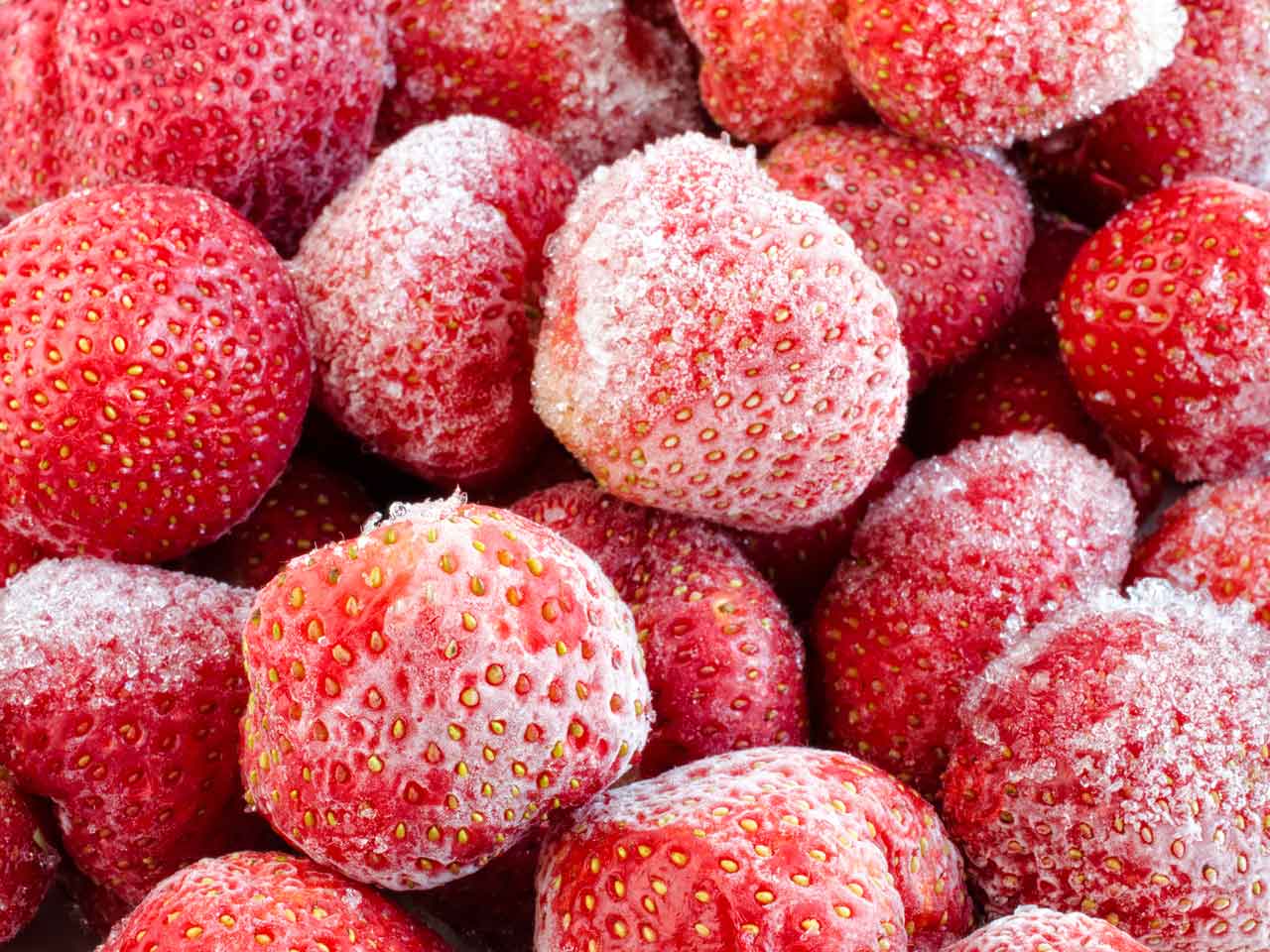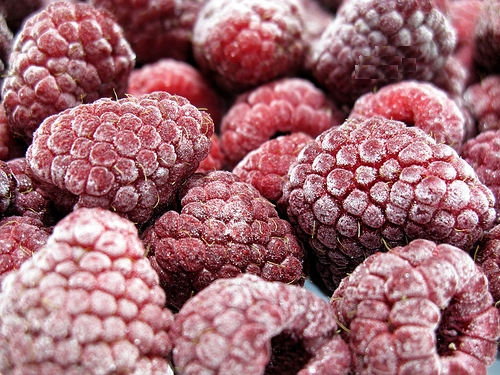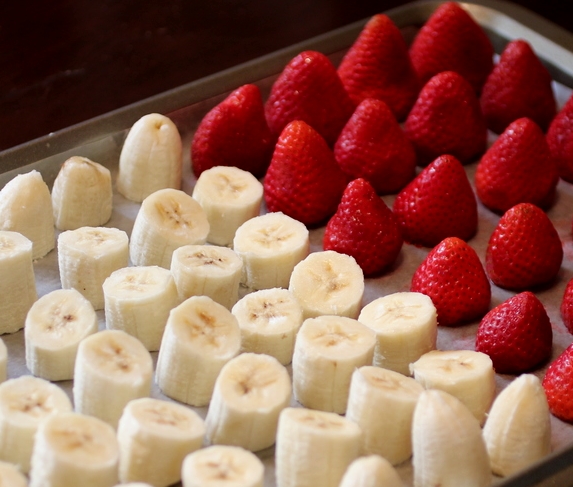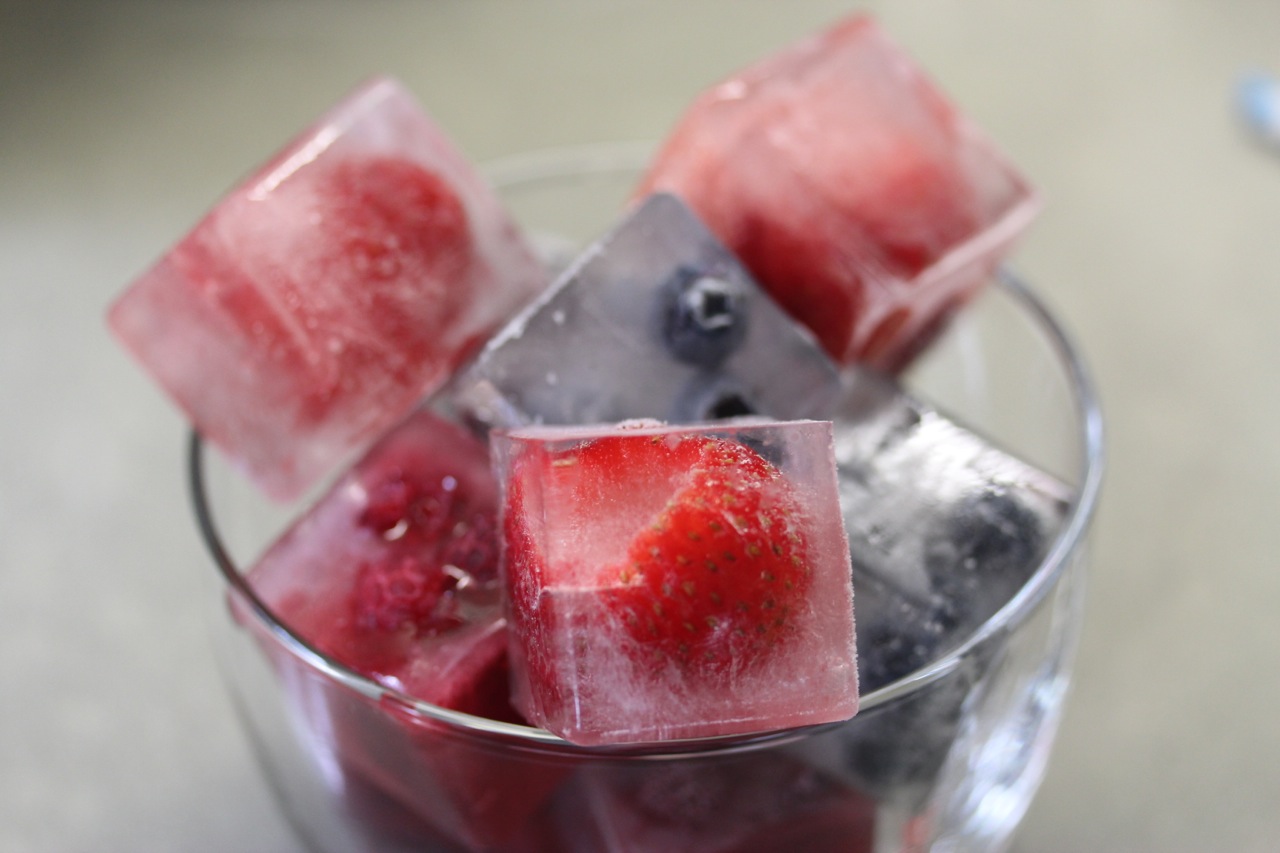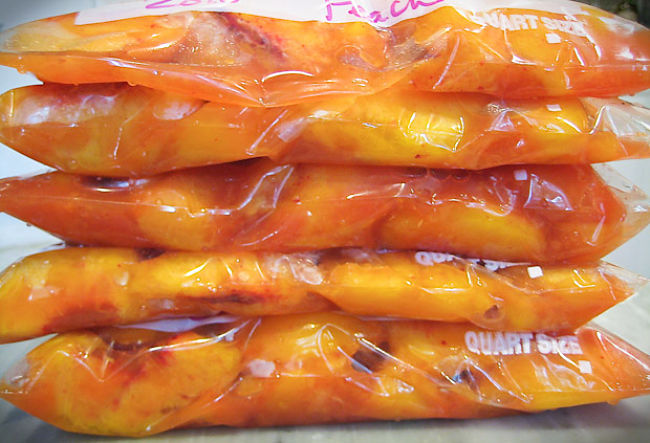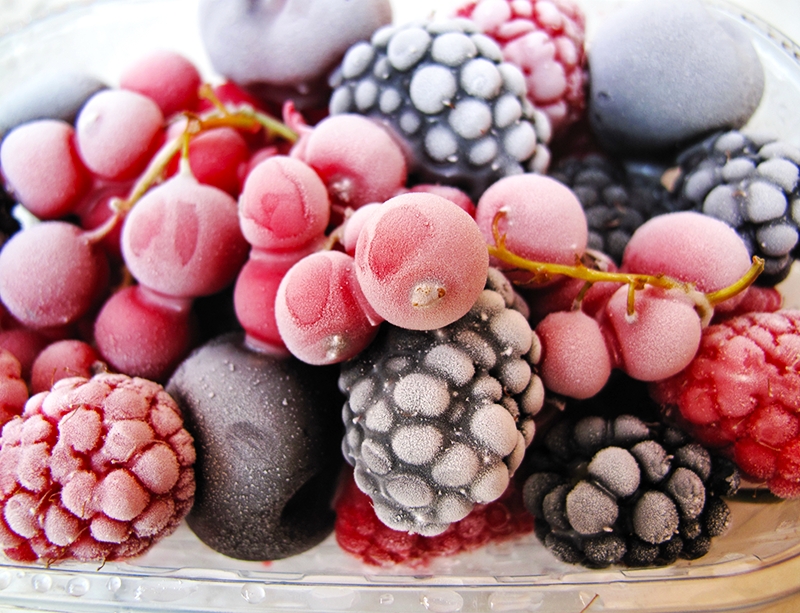Freezing Fresh Peaches, Plums, Strawberries and other Fruit
Anyone who has tried freezing fresh peaches, apricots, berries, plums, strawberries and other fruit knows that it can end in disaster with a mushy unappealing mess.
Understanding the processes that occur when fruit is frozen is important to getting the right outcome. Many people end up with soft, mushy and discolored disasters when the fruit they have frozen is thawed.
Why does this occur and how can it be avoided?
Understanding the freezing process is all about understanding what happens to water when it freezes. It forms water crystals and the formation of these crystal breaks down the structure of the fruit. This is why so called freeze-drying works. During freeze-drying all the water in the food is removed by evaporation while leaving the basic structure and composition of the food intact. This means that the water cannot form crystals in the food when it is frozen and so break down the structure.
So rapidly freezing individual dry berries and dry peach slices that are spread out and separated when freezing works because there is less chance of ice crystals forming and destroying the structure of the fruit. Drying the surface of the food items, and keeping the pieces small, helps this process work.
Most fruit is frozen in sugar syrups for this reason.
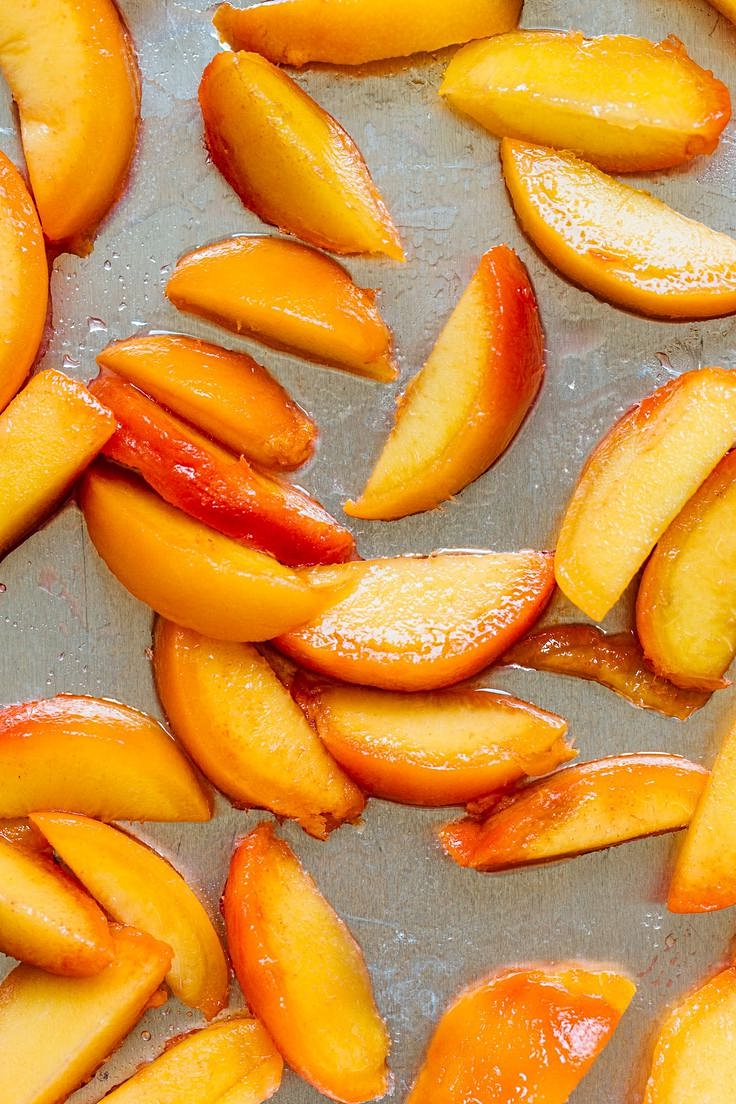
Why Doesn't Freezing Fruit Without Sugar Work?
This is related to another property of water and things placed in water. If you try to poach peaches in plain water without sugar or salt the peaches lose their sweetness. People assume that the sweetness is drawn out of the peach into the water. But if you taste the water you will find that it doesn't taste sweet. So what happens to the sweetness. What actually happens is that water is drawn into the peach cells so that the sweetness is diluted.
This natural process is called 'osmosis'. Water is drawn through a membrane (the cell walls within the peach ) by the difference in dissolved salts on the two side.In this case the peach cells have much more salts within the cells and water flows though the membrane into the cells.To avoid this dilution effect the fruit should be poached in sugar syrup rather than water. You could use salt instead to increase the dissolved ion concentration of the poaching liquid, but this would be less desirable.
So when you try to freeze fruit in plain water or even if the fruit is wet, water will be drawn into the fruit, ice crystals will form and you will end up with insipid unsweet mush.
Enough of the science, lets get to the topic of freezing fresh fruit.
There are four methods for Freezing Fruit, and they suitability of the methods varies widely depending of the size and type of fruit:
1. Dry-freezing
Suitable for: gooseberries, rhubarb, red currants, cranberries, blueberries, raspberries, strawberries or blackberries. Also suitable for individual slices of peaches and other fruits that have been dried and frozen, with the slices spread out on a tray before freezing.
Dry-freezing is suitable for small individual whole hard-skinned berries, which do not discolor when exposed to the atmosphere. It is also suitable or most fruits that will be made into jams, puddings, jellies or fruit pies. The mushiness f the thawed fruit does not matter in this case.
- Wash hard-skin berries in very, very cold water. This will tension the skin and start the cooling process. The hard outer skin stops the water from penetrating. Dry each of the individual berries thoroughly and carefully with kitchen paper. Softer fruits and pieces should not be washed in plain water before freezing. They should be washed in a sugar solution and then dried thoroughly. Whole fruits such as peaches and apricots cannot be dry frozen. They need to be sliced thinly with each of the slices dried well.
- Spread the berries or fruit slices out to form a single layer on a small baking tray lined with greaseproof or baking paper.
- Transfer the baking tray to the freezer or your refrigerator and so in small batches. Keep the tray flat. The aim is to freeze the fruit very quickly until the fruit is frozen solid.
- Once the fruit is frozen solid, transfer each of the items to a rigid container or a polythene freezer bags for storage. If using bags, remove all the air by using a straw to suck the air in the bag. Seal the bag or container and label it. The frozen fruit will last for 6 - 8 months.
2. Syrup-freezing of Fruit
Suitable for: peaches, plums, apricots, pineapple, rhubarb, damsons and greengages. Softer fruit is generally halved, stoned or sliced before being frozen.
A syrup is prepared by dissolving sugar or other sweeteners in water over moderate heat in a saucepan. The syrup is set aside to cool before pouring over the cut fruit and then freezing.
Some of the alternative syrups are shown in the table below. Peaches must be packed in a syrup solution or fruit juice. The sugar syrup or fruit juice is added to help stabilize the color, improve flavor and retain the shape of the fruit. It does nor preserve the fruit as such but retains its shape and texture as far as possible. You only require enough liquid to just cover the peaches. The syrup or juice helps prevent freezer burn, drying and oxidation in the air (browning). Fruit juice syrup can be used straight away.
The types of syrups are shown below:
Alternative Types of Syrups for Freezing Fruit
|
Type of Syrup
|
Sugar
|
Water
|
Yield
|
|---|---|---|---|
|
Fruit juice (peach, apple or white grape)
|
0
|
0
|
4 cups
|
|
Splenda (2 cups)
|
0
|
6 cups
|
6 cups
|
|
Light sugar
|
2 cups
|
6 cups
|
7 cups
|
|
Medium sugar
|
3 cups
|
6 cups
|
7.2 cups
|
|
Heavy sugar
|
4 cups
|
6 cups
|
7.4 cups
|
Preparation:
- Place 225 g (8oz) of caster sugar into a saucepan and add 1 pint (600 ml) of water.
- Stir and then and heat gently, stirring frequently to dissolve the sugar.
- Bring the mixture to the boil, stirring constantly and then set aside to cool.
- Add the juice of one lemon (optional).
- To skin the fruit easily dip it into boiling water for 20 - 45 seconds.
- Remove from the hot water using a slotted spoon and quickly transfer to a large bowl full of ice water and let cool for several minutes. This will enable the skins to peel off easily.
- Dry the fruit with kitchen paper to remove any excess water.
- Place the fruit in layers into rigid plastic containers and pour in the syrup. Allow about 1/2 inch ( 1 cm) of space between the liquid and the lid to allow for expansion during freezing.
- Cover the container, label it and transfer to the freezer.
- The fruit will be suitable for use over a period of 9 - 12 months.
3. Sugar-freezing
Suitable for: strawberries, raspberries, black-currants and blackberries and other soft fruits that will be used to make jams or puddings. Note: Avoiding washing the soft fruits before preparing for freezing.
With this method the fruit is combined with granulated sugar, which draws out liquid from the fruit. This liquid forms a syrup that coats the fruit and help protects it from the air, which could cause discoloration and oxidisation of the fruit.
Preparation:
- In a large bowl, add the fruit and sugar in the ratio of 4oz (115 g) of caster sugar together to each 1 lb (455 g) of fruit.
- Mix gently but thoroughly to ensure that every piece of fruit is dusted with a layer of sugar.
- Transfer the fruit and sugar to a rigid plastic container or place into polythene bags suitable for freezing.
- Remove most of the air from the bags, and seal securely.
- Transfer the containers of the bags to the refrigerator for freezing.
- Use the fruit within about 9 - 12 months.
4. Freezing of Fruit Purees
Suitable for: plums, strawberries, apples, raspberries, pears, apricots, gooseberries, black currants, blackberries, rhubarb and damsons.
This method is a good way of handling bulk fruit that is not in perfect condition or fruit that is slightly overripe and unsuitable for the other methods. It is also suitable for pieces of fruit. Once defrosted, this fruit puree can be served as a mousse or made into jams, sauces or used as is to accompany ice cream and other desserts. Often it is best to lightly stew and sweetened the fruit with sugar before pureeing and this enhances and blends the flavors together.
Preparation:
- Wash, skin and cut the fruit into pieces and remove skins and seeds.
- Add about 1 lb (455 g) of fruit to a large saucepan and add 4 tablespoons of water (maintain this ratio for other amounts). The water is only there to stop the fruit sticking to the base of the pan.
- Cover the saucepan and heat to simmer the fruit until it is soft, stirring frequently.
- Add about in 4 oz (115 g) of caster sugar, remove from the heat and stir the mixture until the sugar has dissolved (do not boil at this stage).
- Allow the mixture cool down and then blend using a food processor or blender. If you don't have one you can simply pass the fruit through a fine sieve.
- Transfer the puree to plastic containers allowing a little space at the top for expansion.
- Freeze the containers. The puree can be used within 6 - 8 months.
Related Articles
=> Danger Zone Food Safety Temperature Charts Cook, Reheat, Chill, Freeze
=> Q&A Can You Safely Refreeze Thawed Foods - Refreezing Myth Dispelled?
=> Freezing Fresh Garlic by Blanching, Coating With Olive Oil
=> Health Benefits of Peaches, Nutrition Facts, Culinary Uses, Recipes
=> Upside Down Muffins Recipes - Pineapple, Peach, Apple, Berries
=> Are Fruit Smoothies Actually Healthy? Fact or Fiction?
=> What Fruit is Healthiest For Calories, Fiber, Fat, Vitamins, Minerals
